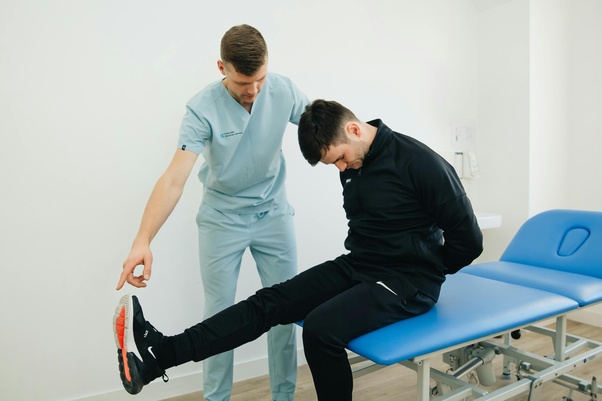Spasticity Treatment Market Projected to Reach $2.76 Billion by 2030
Advancements in Therapeutic Options and Rising Prevalence of Neurological Disorders Fuel Market Growth
The Spasticity Treatment Market Growth is poised for significant expansion, with projections indicating an increase from $1.33 billion in 2023 to $2.76 billion by 2030, reflecting a compound annual growth rate (CAGR) of 11%.
This growth is primarily driven by advancements in therapeutic options and the rising prevalence of neurological disorders.
Request a Free Sample of the Report to Gain In-Depth Insights! https://www.maximizemarketresearch.com/request-sample/81891/
Market Definition and Estimation
Spasticity is a neuromuscular condition characterized by continuous muscle contractions, leading to muscle stiffness and impaired movement control. It often results from damage to the brain or spinal cord regions responsible for voluntary movement regulation, leading to an imbalance in neural signals between the nervous system and voluntary muscles. Common symptoms include clonus, abnormal posture, elevated muscle tone, and hyperactive reflexes. The condition significantly impacts individuals with neurological disorders such as multiple sclerosis, cerebral palsy, and traumatic brain injury. The spasticity treatment market, valued at $1.33 billion in 2023, is expected to reach $2.76 billion by 2030, underscoring the increasing demand for effective therapeutic interventions.
Market Growth Drivers and Opportunities
Several key factors are propelling the growth of the spasticity treatment market:
-
Increasing Prevalence of Neurological Disorders: The rising incidence of conditions such as multiple sclerosis, cerebral palsy, and traumatic brain injuries has heightened the demand for effective spasticity treatments. As these disorders often result in spasticity, the need for targeted therapies has become more pronounced.
-
Advancements in Therapeutic Options: Continuous research and development have led to the introduction of novel therapeutic options, including combination products like benzodiazepines, imidazole, and gamma-aminobutyric acid analogues. These advancements offer improved efficacy and patient outcomes, driving market growth.
-
Increased Awareness and Healthcare Expenditure: Growing awareness about spasticity and its impact on quality of life, coupled with increased healthcare spending, has facilitated better access to treatment options. This trend has contributed to the expansion of the spasticity treatment market.
-
Technological Innovations in Drug Delivery: The development of advanced drug delivery systems, such as intrathecal pumps and targeted botulinum toxin injections, has enhanced the precision and effectiveness of spasticity treatments, thereby boosting market growth.
Claim Your Free Sample to Explore the Complete Report! https://www.maximizemarketresearch.com/request-sample/81891/
Segmentation Analysis
The spasticity treatment market is segmented based on drug class, indication, route of administration, and end user:
-
By Drug Class:
- Benzodiazepines: These medications act as central nervous system depressants, helping to reduce muscle stiffness and spasms.
- Alpha2-adrenergic Agonists: These agents modulate neurotransmitter release, aiding in muscle relaxation.
- Botulinum Toxins: Injected directly into affected muscles, botulinum toxins block nerve signals, reducing muscle contractions.
- Others: Includes various muscle relaxants and antispastic agents utilized in treatment protocols.
-
By Indication:
- Multiple Sclerosis (MS): A chronic autoimmune disease affecting the central nervous system, often leading to spasticity.
- Cerebral Palsy (CP): A group of disorders affecting movement and muscle tone, commonly associated with spasticity.
- Traumatic Brain Injury (TBI): Injuries to the brain that can result in spasticity due to disrupted neural pathways.
- Others: Includes stroke-induced spasticity and spinal cord injuries leading to muscle stiffness.
-
By Route of Administration:
- Oral: Medications administered orally, offering convenience but with potential systemic side effects.
- Parenteral: Includes intravenous, intramuscular, and intrathecal administrations, providing targeted and rapid relief.
-
By End User:
- Pediatrics: Children affected by conditions like cerebral palsy requiring specialized spasticity management.
- Adults: Adults with neurological disorders such as MS or post-stroke spasticity receiving tailored treatments.
Seeking Additional Insights? Discover More Details Here! https://www.maximizemarketresearch.com/market-report/global-spasticity-treatment-market/81891/
Regional Insights
-
North America: Dominates the spasticity treatment market, attributed to advanced healthcare infrastructure, high prevalence of neurological disorders, and substantial investment in research and development.
-
Europe: Holds a significant market share due to increasing awareness about spasticity management and supportive healthcare policies facilitating access to advanced treatments.
-
Asia-Pacific: Expected to witness rapid growth, driven by a rising patient population, improving healthcare facilities, and growing awareness about neurological disorders and their management.
Competitive Landscape
The spasticity treatment market is characterized by the presence of several key players focusing on innovation, strategic collaborations, and expanding their product portfolios to maintain a competitive edge. Notable companies include:
-
Allergan plc: Renowned for its botulinum toxin product, Botox, widely used in spasticity management.
-
Ipsen Pharma: Offers Dysport, another botulinum toxin product approved for treating spasticity in various muscle groups.
-
Medtronic plc: Provides intrathecal baclofen therapy systems, delivering medication directly to the spinal fluid for effective spasticity control.
-
Merz Pharmaceuticals: Developed Xeomin, a botulinum toxin type A product utilized in managing spasticity.
-
Pfizer Inc.: Offers various muscle relaxants and is actively involved in research to expand its spasticity treatment portfolio.
Conclusion
The global spasticity treatment market is on a trajectory of substantial growth, driven by the rising prevalence of neurological disorders and continuous advancements
To explore More Reports, visit our website:
Gram Staining System Market https://www.maximizemarketresearch.com/market-report/global-gram-staining-system-market/25308/
Bioink Market https://www.maximizemarketresearch.com/market-report/bioink-market/163173/
Synthetic Biology Market North America Forecast (20192026) https://www.maximizemarketresearch.com/market-report/synthetic-biology-market-north-america/1629/
Global Vial Adaptors for Reconstitution Drug Market https://www.maximizemarketresearch.com/market-report/global-vial-adaptors-for-reconstitution-drug-market/36846/
About Maximize Market Research:
Maximize Market Research is a versatile market research and consulting firm with expertise across a wide range of industries. Our coverage includes medical devices, pharmaceutical manufacturing, science and engineering, electronic components, industrial equipment, technology and communication, automotive, chemicals, general merchandise, beverages, personal care, and automated systems, among others. We offer a comprehensive suite of services, including market-validated industry estimates, technical trend analysis, in-depth market research, strategic consulting, competitive analysis, production and demand evaluation, and client impact studies.
Contact Maximize Market Research:
Address :
3rd Floor, Navale IT Park, Phase 2
Pune-Bangalore Highway, Narhe
Pune, Maharashtra 411041, India
Email: sales@maximizemarketresearch.com
Phone: +91 96071 95908, +91 9607365656




